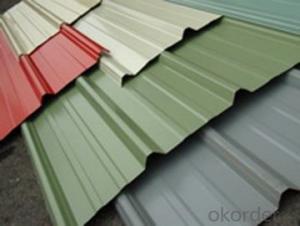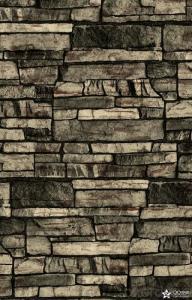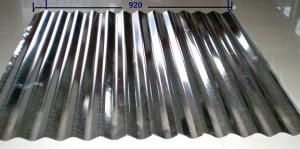color bond surface coating steel plate--XY006
- Loading Port:
- China Main Port
- Payment Terms:
- TT OR LC
- Min Order Qty:
- -
- Supply Capability:
- -
OKorder Service Pledge
OKorder Financial Service
You Might Also Like
1. Color bond surface coating steel plate :
2.More than ten years experiences, the products are sold to the domestic city and some international cities we strivc to develop production of color coating steel plate the plating (aluminum )zinc steel. Coil cheickness between 0.6mm and 1.5mm and the width from 600mm to 1250mm and a variety of high durability of color coating steel plate.
3The company has multiple layer patterns for customers to choose The company provides products deep processing services ,meet the various needs of customers on board specifications All of out products comply with international quality standards and are greatly appreciated in a variety of different markets throughout the world.
4.If you ate interested in any of our products or would like to discuss a custom order please feel free to contact us we are looking forward to forming successful business relationships with new clients around the world in the near future.
5.We can design the color and thickness according to customers' requirements. The delivery time is only 30 day after you confirm the order.
- Q: What is the modulus of elasticity of steel sheets?
- The modulus of elasticity of steel sheets typically ranges between 190 and 210 gigapascals (GPa).
- Q: Can steel sheets be used in corrosive environments?
- Yes, steel sheets can be used in corrosive environments, but the type of steel used and the proper protective measures need to be taken into consideration. Stainless steel, for example, is highly resistant to corrosion and can withstand harsh environments. It contains chromium, which forms a protective oxide layer on the surface, preventing corrosion. Galvanized steel is another option, where a layer of zinc is applied to the steel surface, providing a protective barrier against corrosion. Additionally, various coatings such as epoxy, polyurethane, or paint can be applied to steel sheets to enhance their resistance to corrosive elements. It is important to select the appropriate steel grade and protective coatings based on the specific corrosive environment to ensure long-lasting performance. Regular inspections and maintenance are also necessary to identify and address any potential signs of corrosion.
- Q: How to choose welding method for welding different plate and thick steel plate?
- Plate groove, the groove thickness is less than or equal to the thickness of the sheet, the welding arc to a plate, the molten pool of molten iron melt sheet, the specific point of view of plate thickness difference, observe the molten pool adjust current, prevent sheet welding, double-sided welding when necessary.
- Q: Are steel sheets suitable for swimming pool construction?
- Steel sheets are a great option for constructing swimming pools due to their strength and durability. They are well-known for their ability to withstand the weight of the water and the pressure applied to the pool walls, providing a stable and sturdy structure. Furthermore, steel sheets can be easily shaped and joined together in different sizes and forms, allowing for customized and flexible pool designs. In addition, steel is resistant to corrosion, which is essential for maintaining the pool's integrity, particularly when exposed to chlorinated water. This makes steel sheets a dependable and widely chosen material for swimming pool construction.
- Q: Are steel sheets suitable for decorative screens or partitions?
- Indeed, decorative screens or partitions can be made using steel sheets. The versatility of steel as a material allows for a wide array of design possibilities. Intricate patterns and designs can be achieved through cutting, shaping, and welding steel. Furthermore, steel is known for its durability and long-lasting nature, making it suitable for both indoor and outdoor applications. To cater to different aesthetic preferences, steel can be painted or powder-coated in various colors. In addition to providing privacy, steel screens or partitions also enhance the visual appeal of a space. In summary, steel sheets offer immense potential for creating decorative screens or partitions due to their adaptability, resilience, and aesthetic capabilities.
- Q: What are the different embossing options available for steel sheets?
- There are several embossing options available for steel sheets, including blind embossing, deep embossing, pattern embossing, and textured embossing.
- Q: How do steel sheets compare to other materials in terms of durability?
- Steel sheets are widely recognized for their exceptional durability compared to other materials. The unique properties of steel, such as its high tensile strength and resistance to corrosion, contribute to its long-lasting nature. Unlike materials like wood or plastic, steel sheets are not easily susceptible to wear and tear, making them a preferred choice for various applications that require durability. Steel sheets can withstand heavy loads without bending or warping, making them suitable for construction projects, automotive manufacturing, and industrial applications. Additionally, steel sheets have a longer lifespan compared to other materials, reducing the need for frequent replacements and maintenance. Overall, the durability of steel sheets is unmatched by many other materials, making them a reliable and cost-effective choice for many industries.
- Q: How do steel sheets handle electromagnetic interference?
- Steel sheets are highly effective in handling electromagnetic interference (EMI) due to their inherent electrical conductivity and magnetic permeability. These properties allow steel sheets to act as a shield against electromagnetic waves and prevent their penetration into or out of an enclosed space. When exposed to EMI, steel sheets act as a barrier, reflecting and absorbing electromagnetic waves, thus minimizing their impact on electronic devices and systems. This shielding effect is particularly crucial in sensitive environments such as data centers, laboratories, or industrial facilities where electromagnetic interference can disrupt electronic equipment and compromise their functionality. The thickness and composition of the steel sheet also play a significant role in determining its effectiveness in handling EMI. Thicker sheets provide better shielding due to increased attenuation of electromagnetic waves. Additionally, certain types of steel alloys, such as carbon steel or stainless steel, offer enhanced EMI shielding capabilities. It is important to note that while steel sheets provide excellent EMI shielding, they are not entirely impervious to electromagnetic waves. Factors such as the frequency of the waves and the size of any openings or gaps in the steel sheet can affect their shielding effectiveness. Therefore, proper installation and grounding techniques are essential to ensure optimal EMI protection. Overall, steel sheets are a reliable choice for managing electromagnetic interference, making them a preferred material in various industries where EMI shielding is critical for the uninterrupted operation of electronic devices and systems.
- Q: How do steel sheets perform under heavy loads or pressure?
- Steel sheets are designed to perform exceptionally well under heavy loads or pressure. Due to their high tensile strength and durability, steel sheets can withstand significant amounts of weight without bending or breaking. They offer excellent resistance to deformation and can maintain their structural integrity even when subjected to intense pressure. Hence, steel sheets are widely used in various industries for applications that require robust materials capable of bearing heavy loads or pressure.
- Q: What is the process of cold rolling steel sheets?
- The process of cold rolling steel sheets involves passing hot rolled steel through a series of rollers at room temperature, which compresses and shapes the steel into thinner and more uniform sheets. This process not only improves the surface finish and dimensional accuracy of the steel sheets but also increases their strength and hardness. Cold rolling is commonly used in various industries, including automotive, construction, and manufacturing, to produce high-quality steel sheets with specific thicknesses and properties.
Send your message to us
color bond surface coating steel plate--XY006
- Loading Port:
- China Main Port
- Payment Terms:
- TT OR LC
- Min Order Qty:
- -
- Supply Capability:
- -
OKorder Service Pledge
OKorder Financial Service
Similar products
Hot products
Hot Searches
Related keywords























